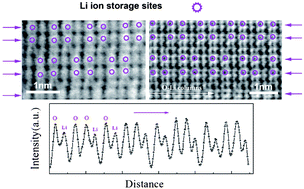Abstract
Titanium niobium oxide (TiNb2O7) with a monoclinic layered structure has been synthesized by a solid state reaction method as an anode candidate for Li-ion batteries. The TiNb2O7

- This article is part of the themed collection: Includes a collection of articles from the Institute of Physics, Chinese Academy of Sciences (IOPCAS)

 Please wait while we load your content...
Please wait while we load your content...